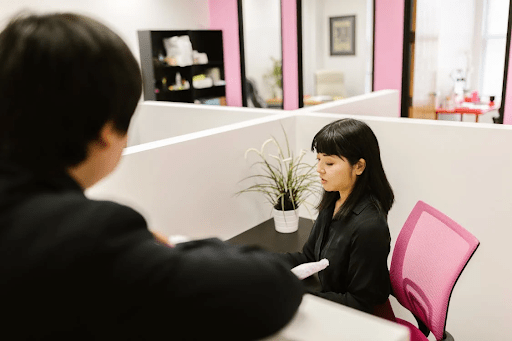
When you’re trying to design an office space, you’re likely thinking about how it can help your team work and thrive. Creating a space that’s conducive to their work can be a real boost to productivity and efficiency, just as poor office design can let them down. There are a few different schools of thought on how to best design a space, but here are some of the most widely agreed-upon principles to keep in mind.
Lighting Is Vital
Lighting is one of the most crucial elements in a productive workspace. It influences mood, energy levels, and overall comfort. Natural light is ideal, as it has been shown to boost mood and reduce eye strain. If natural light isn’t available, high-quality artificial lighting that mimics daylight can be a good alternative. Ensure that workstations are well-lit, reducing the risk of fatigue and encouraging focus. Consider adjustable task lighting at individual desks, allowing employees to control their environment according to their personal preferences and needs.
Consider Their Need for Privacy
Privacy in a workspace allows employees to concentrate and work without constant distractions. While open office plans can encourage collaboration, they can also be noisy and disruptive. Providing private spaces, like cubicles for sale or quiet zones, where employees can work without interruption is essential. These areas should be designed to minimize noise and visual distractions, helping staff to focus on their tasks. By balancing open spaces with private ones, you cater to different working styles, enhancing overall productivity.
Offer Collaborative Spaces
While privacy is important, so is the opportunity for collaboration. Designate specific areas for team meetings, brainstorming sessions, or casual discussions. These spaces should be equipped with tools like whiteboards, comfortable seating, and adequate lighting to foster creativity and communication. Having separate areas for collaboration helps to keep the rest of the workspace quiet and focused, while still providing a place for teams to gather and exchange ideas. The balance of private and collaborative spaces ensures that all types of work can be done efficiently.
Live Plants Help a Lot
Incorporating live plants into the workspace can significantly enhance the environment. Plants improve air quality, reduce stress, and create a more pleasant atmosphere. The presence of greenery can also boost creativity and productivity, making the workspace more inviting. Choose low-maintenance plants that thrive indoors, like snake plants or pothos, which are not only easy to care for but also effective at purifying the air. Distributing plants throughout the office helps create a calm, balanced environment that benefits everyone.
Consider Being Flexible with Modular Design
A flexible, modular workspace allows you to adapt the environment to the changing needs of your team. Modular furniture that can be easily rearranged enables you to quickly reconfigure the space for different tasks, whether it’s for focused work, collaboration, or relaxation. This flexibility ensures that the workspace can evolve with your team, accommodating new projects, growing teams, or different working styles. By providing a space that can be customized, you empower your employees to create an environment that best supports their productivity and well-being.
Naturally, the tips above will help but, most importantly of all, you have to consider the needs of your workspace and your team, in particular. There’s no one-size-fits-all solution when it comes to creating the perfect workplace.